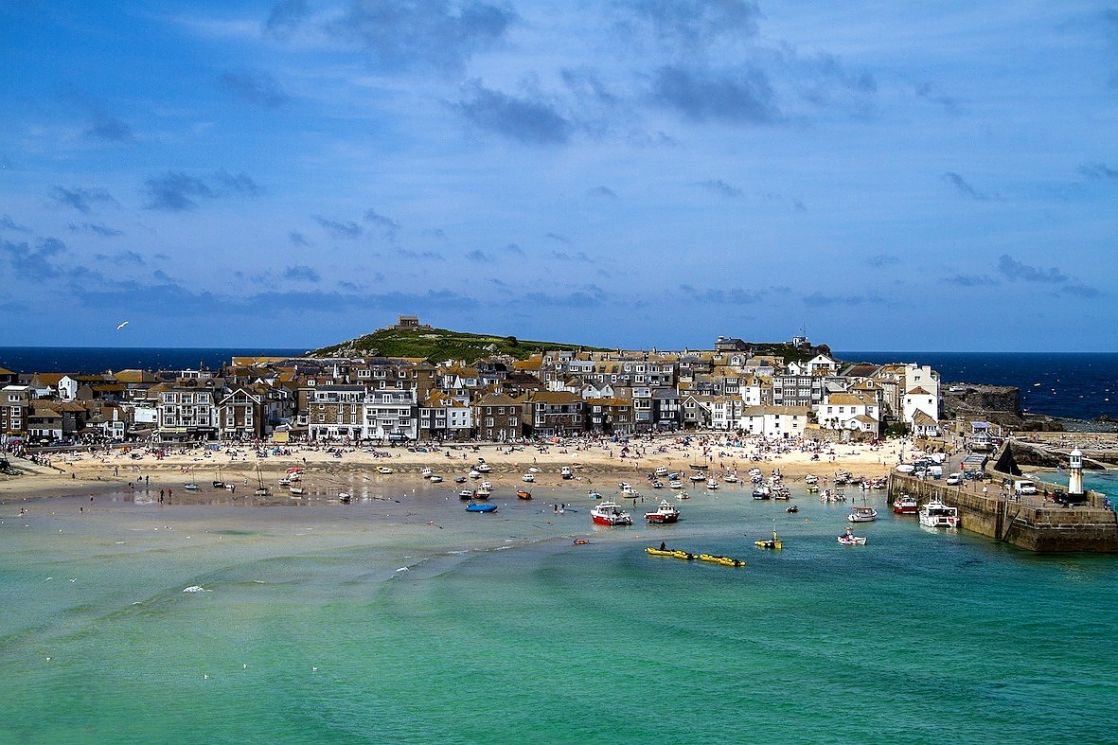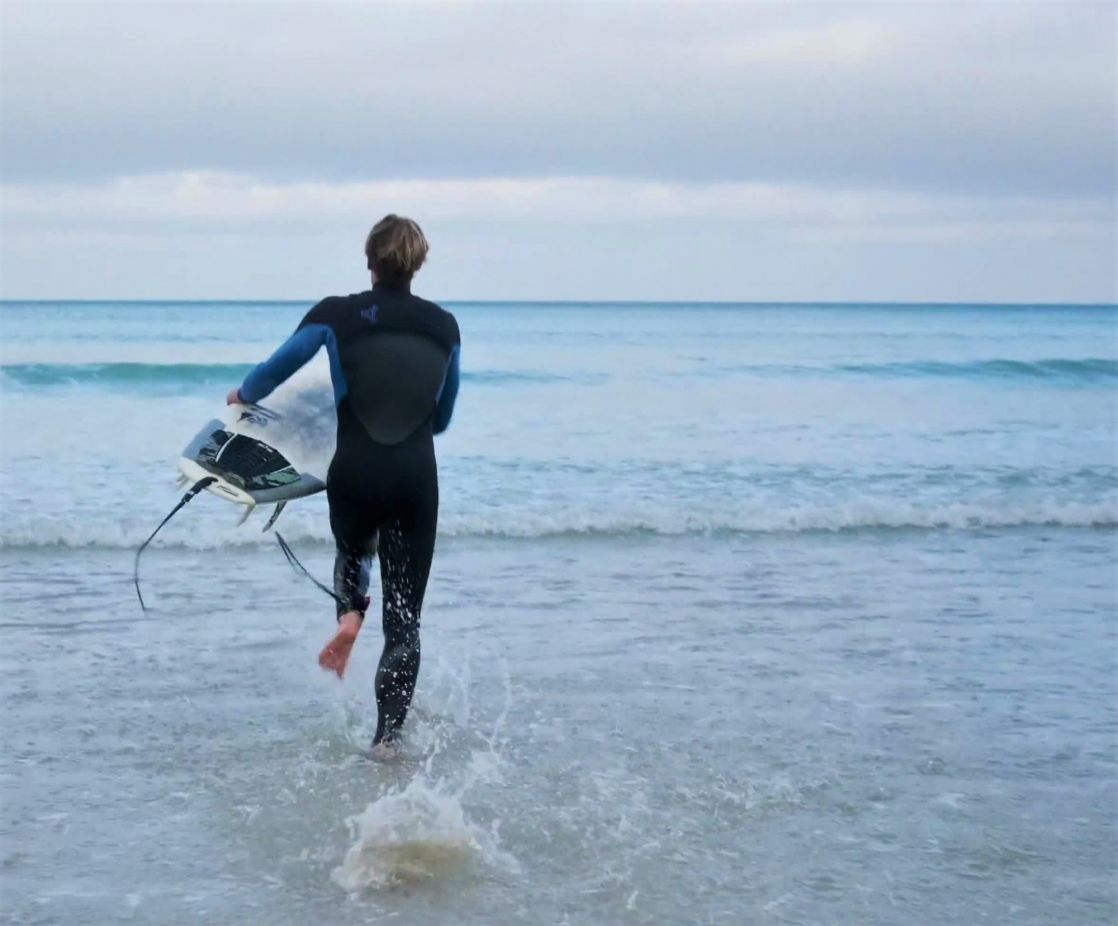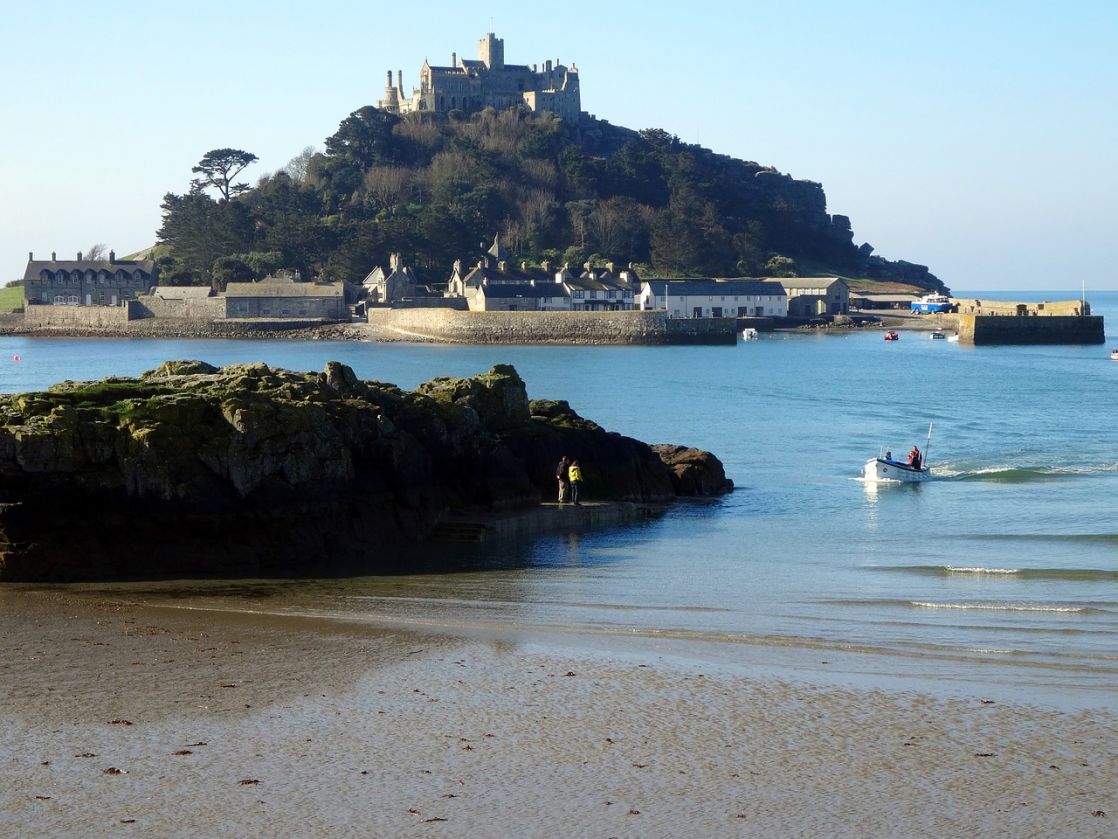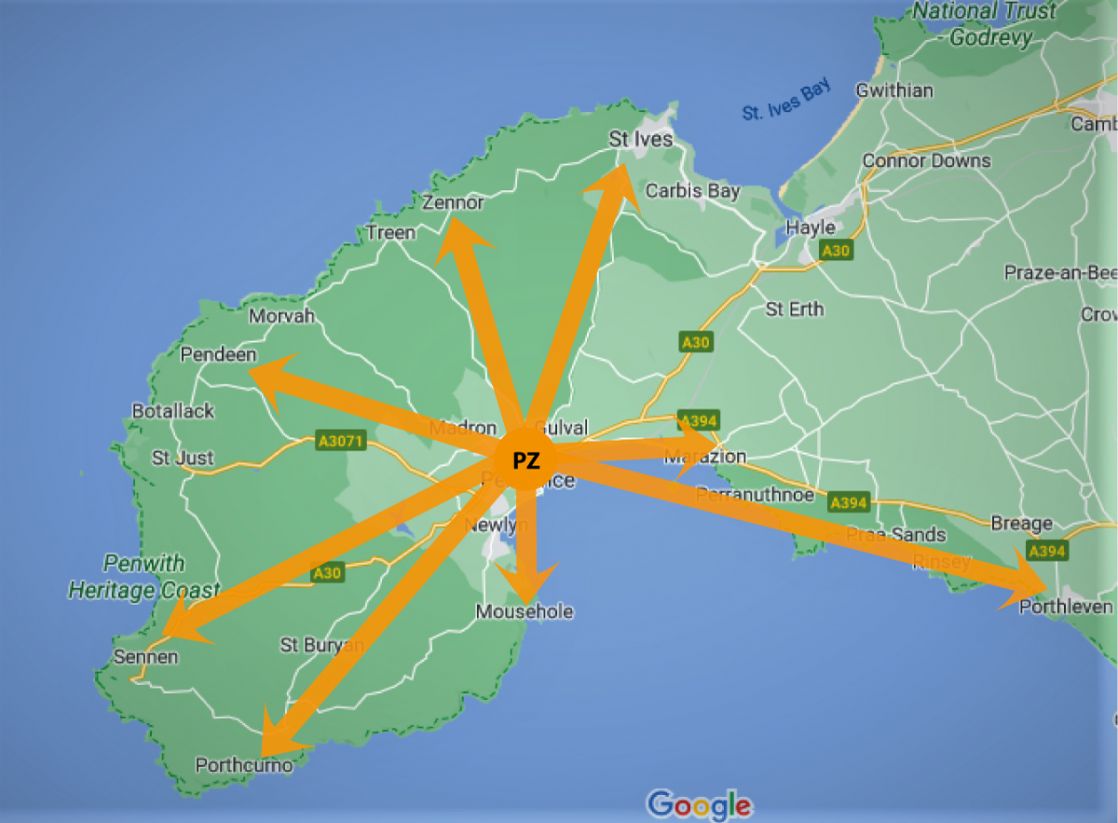Explore the unspoiled beauty and fascinating history of West Cornwall. Where storm-lashed cliffs meet the Atlantic, the scenery is rugged and captivating. From precariously perched tin mines to the smallest fishing coves, this region is steeped in tradition and history.
A day in land exploring the Penwith moors and ancient monuments of West Cornwall adds a unique perspective to this great walk.
Bed and Breakfast - includes night prior to starting the walk and the night after finishing the walk
Luggage Transfers
Maps & Route Notes
Arrival and departure transfers between accommodation and local train stations/car parks
Help, support and great customer service
Itinerary
Afternoon transfer from Penzance train station to your St Ives accommodation. Arrive early to enjoy time in the town.
Distance:
7 Miles/11 Kilometres
Height Gain:
1621 feet/494 metres
Time Walking:
4 hours 30 minutes excluding breaks
Difficulty:
Difficult. The distance is short but there are several steep hills and rocky/muddy sections.
Description:
This first stage of the walk is a dramatic introduction to the Cornish landscape. Beyond the narrow, sheltered streets of St Ives the path soon leads out into one of the wildest sections of the entire South West Coast Path. Rugged granite moors rise inland, while the narrow strip of land between the windswept cliffs and the hills is studded with tiny farming hamlets and stitched with stone walls dating back to prehistoric times.
The views are spectacular from the craggy headlands, with buttresses of weathered stone dropping dramatically to an often restless sea. This is an isolated area, and it is important to remember that long sections of the coastline are inaccessible and offer no refreshments or relief once you are underway.
Distance:
11 Miles/18 Kilometres
Height Gain:
2215 feet/675 metres
Time Walking:
5 hours 45 minutes excluding breaks
Difficulty:
Moderate to difficult. The path is hilly, narrow and for the first 6 miles it is littered with rocks, making for slow progress.
Description:
Along rocky paths and moorland fringes, the trail passes through hard granite-crowned countryside towards the Pendeen and St Just mining districts.
It is an incredible walk through one of the most dramatic and varied sections of the entire Cornish coast. The region is littered with the relics of Cornwall’s industrial past, with ruined mine buildings perched on cliff tops and nestled in the deepest valleys. Once again the landscape is dominated by high cliffs, cut into narrow zawns and sheer promontories by the often violent storms of the Atlantic.
Distance:
12 Miles/19.5 Kilometres
Height Gain:
392 metres/ 1268 feet
Time Walking:
5 hours 30 minutes excluding breaks
Difficulty:
Moderate. There are no major hills but the path can be uneven and muddy.
Description:
Away from the coast path, the route leads inland across the stunning moors of the Land’s End Peninsula. Narrow paths weave through gorse and bracken into the heart of this granite kingdom, where from high hill tops we can glimpse both coasts and enjoy a fantastic sense of tranquility and isolation.
The moorland is punctuated with ancient remains from the Stone Age right up to the Nineteenth Century mining industry. With over 6000 years of history in just a few square miles, the walk is a tour through time and Cornwall’s rich heritage.
Distance:
11.5 Miles/18.5 Kilometres
Height Gain:
2290 feet/698 metres
Time Walking:
5 hours 45 minutes excluding breaks
Difficulty:
Moderate with several rocky sections and some steep hills.
Description:
This walk takes in the most significant staging post on the entire Cornish coast path – Land’s End, the most westerly spot in mainland Britain. After rounding the storm-lashed cliffs of Land’s End the path traverses open cliff tops that provide sustenance for only a sparse covering of heather and gorse. Further south these give way to open bays and sheltered valleys.
The waters are the clearest you will find in Cornwall and the beaches en route are spectacular. Porthcurno and Porthchapel are real gems, with turquoise water and golden sand. During the warmer months dolphins and basking sharks can often be spotted here, so keep your eyes open.
Distance:
10.5 Miles/17 Kilometres
Height Gain:
1896 feet/578 metres
Time Walking:
6 hours excluding breaks
Difficulty:
Varied. A difficult start with some serious hills to climb. It remains relativley difficult until Lamorna, where boulders litter the path but from then on it is straight forward.
Description:
This walk takes you through more sheltered coastline where patches of woodland reach right down to the shoreline. Tiny fishing hamlets are nestled in steep sided coves, and the path winds its way over high granite headlands. Enjoy the sense of wilderness on the first section of the path, because just around the corner wait the calm waters and hubbub of Mount’s Bay.
The first major settlement, Mousehole, was once the premier port of Mount’s Bay. Today it is the quintessential Cornish fishing village, with a sheltered harbour and a jumble of granite cottages. The busy port at Newlyn is still home to Britain’s second largest commercial fishing fleet, and the shops and cafes of Penzance provide a centre for the surrounding towns and villages.
Map
Interests

With the Tate Gallery and the Barbara Hepworth Sculpture Garden, five beaches, dozens of restaurants and countless seagulls, St Ives is one of Cornwall’s most popular towns and an ideal place to rest before taking on the coast path.

Plenty of opportunity to get in the ocean on this walk. Take a surf lesson (wetsuits provided!), rent a Stand Up Paddle board or just get in for a swim. Mention this when planning and we can let you know the best spots.

This National Trust gem is connected to the mainland by a cobbled causeway, walkable at low tide only, and is one of Cornwall’s premier attractions. Or take it easy and enjoy the town’s restaurants, cafes and pubs

We arrange all five nights in Penzance with daily transfers to and from the coast path. You just walk.
Flexible daily walks, ad hoc rest days, no packing and unpacking every day, no hassle. Read more on our centre based holidays.
Terrain
The coast path is much more demanding and time consuming than hill walking and a 10 mile (16 km) hike typically takes five hours.
Throughout most of West Cornwall the coast path is made of compacted earth, sand and natural rock. Steps are often cut into the ground but it is rare that you will find a hand rail to support yourself.
The coast path runs close to the cliff edge and if you suffer from dizziness or vertigo, a coast path walking holiday may not be for you. However it is rare that you will be walking along high cliffs with a sheer drop to the sea. More commonly there is a series of rocky platforms leading down to the sea. The exception to this is on the north coast between Hayle and Perranporth and then Newquay to Padstow where the path meanders to within one metre of the cliff tops and usually there is no barrier.
The are a lot of hills in Cornwall and for every descent down towards the sea there is a corresponding climb back up. Consider that over its total 630 miles, the South West Coast offers an estimated 35,000 metres to climb – that’s almost four times the height of Mount Everest!
The South West Coast Path is a natural trail and signage is minimal. There are discreet signs at most junctions but in some places you will need to use a map.
We provide route notes and 1:25000 maps and most walkers find that as they progress along the path they become quite adept at spotting the coast path signs.
Map reading skills are an advantage but with a smart phone/GPS, our route notes and a little common sense you should be fine. If you feel uncomfortable with this and would prefer a walk with regular sign posts, we advise looking for an alternative holiday.
Accommodation
We are walkers ourselves and we know that at the end of a long day you want a warm welcome and a comfortable bed. That is why we use B&Bs, hotels and guesthouses that we have carefully selected and importantly, visited ourselves. These are chosen for their access from our walking routes, their quality and their friendly atmosphere.
In practice this means that you will not have to walk more than 20 minutes from the coast path to your accommodation, there are restaurants or pubs within a short walk of all the B&Bs, you will be greeted by a friendly owner and enjoy a decent breakfast.
Double room
One bed for two people. The standard UK dimensions are 135cm x 190cm.
Twin room
Two single beds in one room. The standard UK dimensions for a single bed are 90cm x 190cm. These offer less floor space than a double due to space between the beds.
Single room
Smaller rooms, often with a shared or private bathroom. The standard UK dimensions are 90cm x 190cm.
Family room
A double bed plus single bed or a double bed plus bunk beds. These can accommodate three or four people.
Ensuite – Toilet, shower and wash basin are contained within the room.
Private – Facilities are outside the room but are not shared with any other room.
Shared – Facilities are shared with at least one other room.
Travel Information
Most of our international clients arrive at one of London’s major international airports (Heathrow or Gatwick) and then make their way to Cornwall by train (five hours 30 minutes from London Paddington).
Heathrow
Good connections with the main London Paddington to Penzance train and journey time is 6 to 7 hours. Connecting flights to Newquay take less than one hour.
National Express coaches run to Penzance and journey time is approximately 8 hours.
Gatwick
Trains connect with the main London Paddington to Penzance train service at Reading and total journey time is 6 to 7 hours.
Newquay
Cornwall’s own airport receives flights from major cities across the UK and Dusseldorf and Stuttgart.
We can include airport transfers at the start and end of your holiday for an additional cost (typically £20 to £35 per person). Journey times are approximately one hour to St Ives, Penzance and Falmouth.
London Stansted
It is necessary to travel into Central London if you wish to travel to Cornwall by public transport. Total journey time is approximately 7 hours 30 minutes.
Bristol
An express bus service connects the airport to Bristol Temple Meads train station (30 minute journey) from where there are trains to Penzance (4 hours 30 minutes).
If you are travelling to Cornwall by train, we suggest that you come to Penzance, from where we will provide a transfer to your B&B in St Ives. Although St Ives does have a train station, it is not on the main line and requires changing trains at St Erth. Penzance is the last stop on the main line and it is a pleasant 20 minute journey across to St Ives.
There are direct trains to Penzance from London Paddington (via Reading for airport connections) and journey time is 5 hours 30 minutes with trains leaving at approximately hourly intervals.
Driving to West Cornwall is straight forward but journey times can be long and in July/ August heavy traffic can be an issue. Once you leave the motorway (M5), just follow the A30 all of the way to Penzance.
Rental Cars – In addition to a standard rental, one way rentals are also possible, allowing you to pick up a car from anywhere in the UK and return it locally.
Parking – This can be difficult in St Ives, especially in the summer months and so we recommend leaving your vehicle in Penzance. We will provide transfers from your car to the first B&B and then back to your car at the end.
Journey times – For accurate driving times, use a journey planner. The following times are approximate and do not include rest breaks:
Heathrow/Gatwick – 5 hours
Central London – 5 hours 40 minutes
Bristol – 3 hours 15 minutes
Plymouth – 1 hour 45 minutes
Exeter – 2 hours
Dover – 7 hours
The South West Coast Path is Britain’s longest natural trail. That’s 630 miles of beautiful coastal scenery and four times the height gain of climbing Mount Everest.
This is the South West Coast Path in Cornwall, the most westerly and most beautiful section of the trail.
This is your chance to experience life on the South West Coast Path. Superb scenery, excellent hiking, top dining and as much (or as little) adventure as you like.
We had a great holiday in Cornwall. Thank you so much. We would recommend your company very highly. Hope to see you again
We're an 60+ couple and up to now we never commented on a (hiking)holiday - this time it's different! The guys from Western Discoveries (Russ) offered a perfect hiking-tour along the South West Coast Path. The info-material was straightforward, very helpful, informative and the organisation plainly perfect. The chosen B&B's were cosy, our hosts friendly and helpful. Since even the weather was on the bright side, we enjoyed a challenging but splendid hiking along Cornwall's coast.
We are very satisfied with our holiday as organised by you, amd we have used every opportunity after we returned home to recommend your services. The information package is comprehensive and the size of the individual items fits well with the trouser pockets.
We want to thank you for making our trip so wonderful. We found all the B&B’ s lovely, beds and pillows excellent, hosts/hostesses friendly, helpful and gracious. The walks were both beautiful and challenging...and we were grateful to jump into the luggage transfer van when the weather was, in a word, nasty! This experience will be on the top of our list of travel memories!
Yes Russ and Matt, your organisation and support as required during our recent Cornwall walk was “par excellence”. It all worked liked clockwork each day. Thank you again, and yes we will be up for a walk next year, but not sure exactly where !
Hi, had a lovely time again. Everything went perfect just as before. I have and still will recommend you. Thanks ... Tim
Thanks for your email and, more importantly, for the really excellent service you provided to my wife and me, and also our daughter and her friend. We and I had a great time walking from St. Just to The Lizard. The accommodations were excellent, and just what I expected, and the luggage transfers worked perfectly. You also arranged for remarkably good weather; we had rain on a couple of days but nothing that was a problem. I am not sure how you managed that, but thanks for that also. We had a great return trip to the Lizard Peninsula and also enjoyed the chance to see some parts further West with which we were not familiar. I would certainly use Western Discoveries again and will gladly recommend you to friends who are planning similar trips.
we realy enjoyed our trip on the coast path of Cornwell. The scenery was very beautiful and impressing. All Britains we met were realy friendly and helpful. The organization by Western Discoveries was prefect. All B&Bs were nice and their owners realy kindly.
We had a wonderfull time in Cornwall, thank you very much. The weather was good for hiking. We were surprised how different the northern coast is from the south. Also we enjoyed all the great beaches and the lovely towns. We don´t regret our upgrates, because our hotels were very nice, especially the Carlton in Newquay. We loved it!
We had an incredible experience in Cornwall. We are home now and watching old Poldark shows and are "homesick" for the scenery and people we met along the way. At this point I am not sure we have any suggestions, just compliments for you and all of the inns that we stayed in.
we had a wonderful hiking-week and your service for us was perfect! Every day we are talking about our travel in Cornwall and we will recommend your company to our friends.
Thanks for a great holiday. Very well organised, the pack was invaluable and everything ran very smoothly.
Thanks for facilitating our Cornwall hike - the service you provide at Western Discoveries was absolutely spot on for our needs. It provided us with the freedom to walk at our own pace without the worry planning routes, booking accommodation, or carrying heavy packs.
We have nothing but good things to say about our recent visit to Cornwall! We loved the scenery, the hiking, and the incredible variety of Inns along the way. And, of course, the Innkeepers -- welcoming and helpful without exception! Your staff made our holiday seamless -- never a problem with accommodations or baggage. And when we did experience a couple of bumps along the way (train delays, traffic jams, etc.) you made it work out smoothly.
We enjoyed the walk around the cost of Cornwall very much. You have organized everything very well. The B&Bs have been very nice, the people friendly and helpfull. Thank you very much for everything! If every we will be so happy to come back one day, we would choose Westen Dixcoveries for a second journey!
Thank you for organizing our trip to Cornwall. We were not disappointed by the incredibly beautiful scenery or the great service we received. I've hiked Ireland and Scotland with another company and Western Discoveries was just as good or better. We never had to worry about our bags and the accommodations we're variable but always good.
We very much enjoyed our holiday and the beautiful scenery of Cornwal. We also like to thank you for the perfect organization and your kindness. Everything was right! Thank you again and we will certainly choose again for Western Discoveries if we decide to do another hike holiday and of course we will recommend here in the Netherlands!
thank you for helping us out with our holiday. We found breath taking views, even more beautiful than anticipated. Great places to stay at, with Gurnard's Head as our absolute favourite. Using your services was a pleasant experience, you manage to be professional and personal - a wonderful combination.
Our hiking holidays were fantastic. Thank you for the super organisation of the B&Bs and the transport of the luggage. We were very happy with it all. The B&Bs were all very well chosen. They were all very nice and the people were very friendly.
We enjoyed our days in Cornwall. The hiking was fantastic; the boys really enjoyed it. The B&B's were all well chosen. Thanks and we will come back for sure.
We enjoyed every part of it, the relaxed atmosphere, beautiful scenery, wonderful beaches, all the friendly people and the lovely dogs we met on the way. Evenings at wonderful local pubs or restaurants, sitting down and enjoying scones with clotted cream (the jam first) in a spectacular environment, night at the Minack, the lovely weather and of course the hiking.
Uur Coast pad hiking tour was one of the best holidays we have ever had! Thank you very much indeed for your help. We were really impressed about your perfect organisation.
We really enjoyed our holiday and the landscape is amazing. Thanks for the great organization and setup of the journey and your reliability. We felt well taken-care of.
We Hade such a Great Time at Cornwall . All was Perfect . Thank you, and i think it wasn‘t the last once.
We had a great holiday, wonderful hiking , wonderful scenery, great weather. Everything worked very well, contact with you was easy, everything was done on time, there were no problems at all. It’s been years since I’ve stayed at a B and B, but we were both positively surprised at the standard of all the B and B s booked. Great breakfasts. Cornwall was beautiful. We would love to come back.
We enjoyed our hiking holidays very much. Thank you for the perfect oranisation! The weather was almost always sunny but sometimes a little hot. The maps and descriptions were very helpful. We enjoyed our stays in the different accomodations and liked espiacially the ones in Zennor, Treen and Lizard very much!
We would like to thank you for your excellent service during our stay in Cornwall. We really apprechiated your "flexibility" and look Forward to visit Cornwall again.
Be the first to receive all the Latest News and Special Offers...